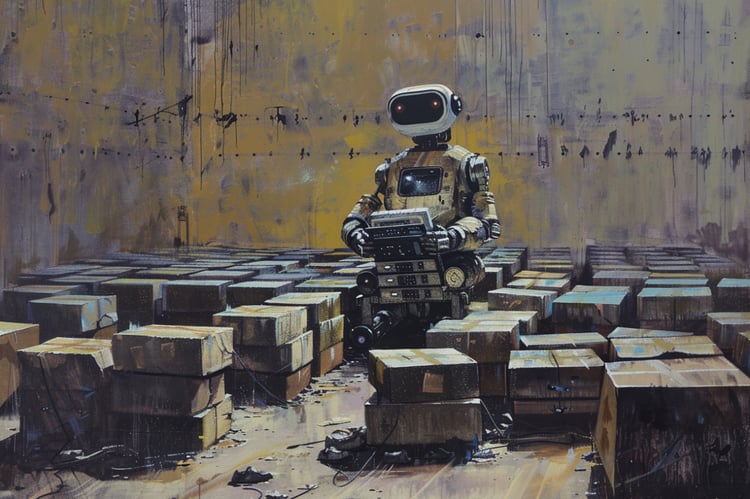Labeled data is raw data that has been assigned one or more labels to add context or meaning. In machine learning and artificial intelligence, these labels often serve as a target for the model to predict. Labeled data is fundamental because it forms the basis for supervised learning, a popular approach to training more accurate and effective machine learning models.
Labeled Data Explained
While unlabeled data consists of raw inputs with no designated outcome, labeled data is precisely the opposite. Labeled data is carefully annotated with meaningful tags, or labels, that classify the data's elements or outcomes. For example, in a dataset of emails, each email might be labeled as "spam" or "not spam." These labels then provide a clear guide for a machine learning algorithm to learn from.
Suppose we have a facial recognition task. Unlabeled data would consist of a set of facial images without any identification information. Conversely, labeled data in this scenario would include the same facial images with corresponding identification tags, i.e., the name of the person in each image. Thus, a machine learning model can learn to associate particular facial features with specific individuals.
What are the Benefits of Using Labeled Data?
- Clear learning pathways. With labeled data, a machine learning model can easily find patterns between inputs and their corresponding outputs. This pattern recognition is crucial in tasks such as voice recognition systems where audio waveforms (input) are associated with textual transcriptions (label).
- Higher accuracy. Labeled data usually results in more accurate models since the learning algorithm has a clear target outcome for every input. For instance, in medical imaging, if images are labeled with the correct diagnosis, the model can learn to predict the right diagnoses with high accuracy.
- Efficient evaluation. Labeled data allows for straightforward evaluation of the model's performance. By comparing the model's predictions against the true labels, we can quantify how well the model is learning.
What are the Limitations of Using Labeled Data?
- Time and effort. Labeling data can be a lengthy, resource-intensive and costly process, particularly for complex data such as images. For example, manual annotation of a single radiology image can take a significant amount of time, especially if it requires a specialist's knowledge.
- Bias or inaccuracy in labels. If the people labeling the data have biases, those biases can be reflected in the labels and thus, influence the machine learning model's decisions. Labeling errors can also occur due to human error or inconsistencies in labeling criteria, which can impact the accuracy of machine learning models.
- Limited availability. Labeled data may not always be available for certain tasks or domains, which can limit the development of machine learning models. This is particularly true for niche or specialized areas where there may be a scarcity of labeled data.
Approaches to Data Labeling
- Manual data labeling. As the name suggests, this approach involves humans manually labeling the data. While it can be highly accurate, it's also time-consuming and expensive, especially for large datasets.
- Semi-automated data labeling. This method combines human intelligence and machine learning. An algorithm first labels the data, after which humans correct the mistakes. It's faster than manual labeling but might still include errors if the algorithm's initial labeling was inaccurate.
- Crowdsourcing. This approach uses the power of the crowd to label data, often via platforms like Amazon Mechanical Turk. It's a cost-effective method, but quality can vary since the people labeling the data might not be experts in the domain.
Examples of Real-World Use Cases of Labeled Data
- Image recognition systems. Labeled images are used to train models that identify objects, people, and activities. For example, Google Photos uses labeled data to recognize and categorize your photos by person or location.
- Spam filters. Email services use datasets of emails labeled as "spam" or "not spam" to train their spam detection algorithms.
- Autonomous vehicles. Labeled data, such as images with identified objects (e.g. pedestrians, other vehicles), helps train self-driving cars to understand their surroundings.
Open-Source Data Labeling Tools
- Label Studio. The most flexible labeling tool to fine-tune LLMs, prepare training data, and validate AI models, with a user-friendly interface.
- Universal Data Tool. It can be used on various platforms to create and label datasets consisting of images, audio, text, videos, and documents. It uses an open data format.
- Sloth. A tool for labeling image and video data for computer vision research. Supports complex annotations and exports to all major formats.
- doccano. It offers easy-to-use annotation tools for text classification, sequence labeling, and sequence-to-sequence tasks.
- Audino. Provides features for transcription and labeling to annotate voice data for VAD, diarization, speech recognition, emotion recognition.
- Computer Vision Annotation Tool. An interactive video and image annotation tool for computer vision tasks. Allows frame-by-frame annotating and bulk actions.
Importance of Labeled Data in the Modern World
Data labeling and crowdsourcing have become critical for developing data-driven machine learning models. While it is relatively easy to label tabular data using spreadsheets, challenges arise when labeling hundreds of images, text, or audio samples. Error rates are often high, requiring specialized tools. This is why major ML platforms provide data labeling features, like those in DagsHub Label Studio and Amazon SageMaker Ground Truth.
Access to large, high-quality datasets has become essential for building data-driven machine learning models. As model complexity increases, so does the need for massive amounts of labeled data.
Open-source projects recognize this and rely on crowdsourcing efforts to obtain the labeled data necessary for developing products like ChatGPT. For instance, Open Assistant, an open-source chatbot, uses data labeled by volunteers.
Labeled datasets are fast becoming the lifeblood of modern AI. The availability of extensive, curated training data has enabled groundbreaking advances in areas like computer vision, natural language processing, and speech recognition. With "labeled data as the new oil," modern applications depend on high-quality annotations to fuel continued progress in artificial intelligence.
Want to learn more about AI and machine learning? Check out the following resources:
FAQs
What's the difference between labeled and unlabeled data?
Labeled data comes with associated tags or labels representing the outcome or category of the data. In contrast, unlabeled data lacks these tags, leaving the machine learning model without a specific outcome to learn from.
Why is labeled data essential in machine learning?
Labeled data is the foundation of supervised learning, which is a prevalent machine learning approach. It guides the model by providing a clear outcome for each input, thus enabling the model to learn the relationships between inputs and outputs.
Can machines label data?
Yes, machines can label data using various automated or semi-automated approaches. However, these methods often require a degree of human involvement to ensure the labels' accuracy.

As a certified data scientist, I am passionate about leveraging cutting-edge technology to create innovative machine learning applications. With a strong background in speech recognition, data analysis and reporting, MLOps, conversational AI, and NLP, I have honed my skills in developing intelligent systems that can make a real impact. In addition to my technical expertise, I am also a skilled communicator with a talent for distilling complex concepts into clear and concise language. As a result, I have become a sought-after blogger on data science, sharing my insights and experiences with a growing community of fellow data professionals. Currently, I am focusing on content creation and editing, working with large language models to develop powerful and engaging content that can help businesses and individuals alike make the most of their data.




